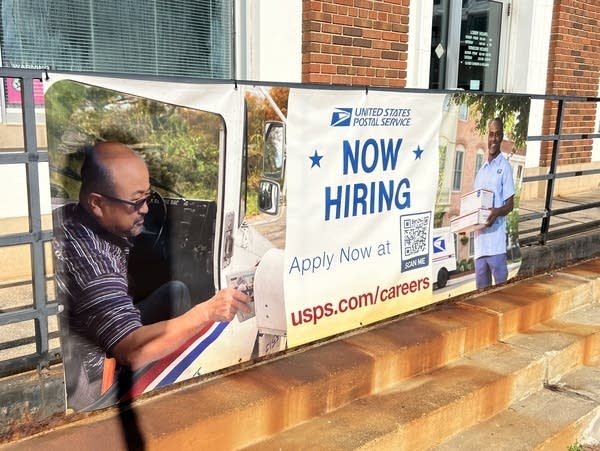Behind the numbers for Minnesota's hot job market

A banner outside a post office in South St. Paul, Minn., advertises open positions with the United States Postal Service on Aug. 8.
Andrew Krueger | MPR News
Go Deeper.
Create an account or log in to save stories.
Like this?
Thanks for liking this story! We have added it to a list of your favorite stories.


